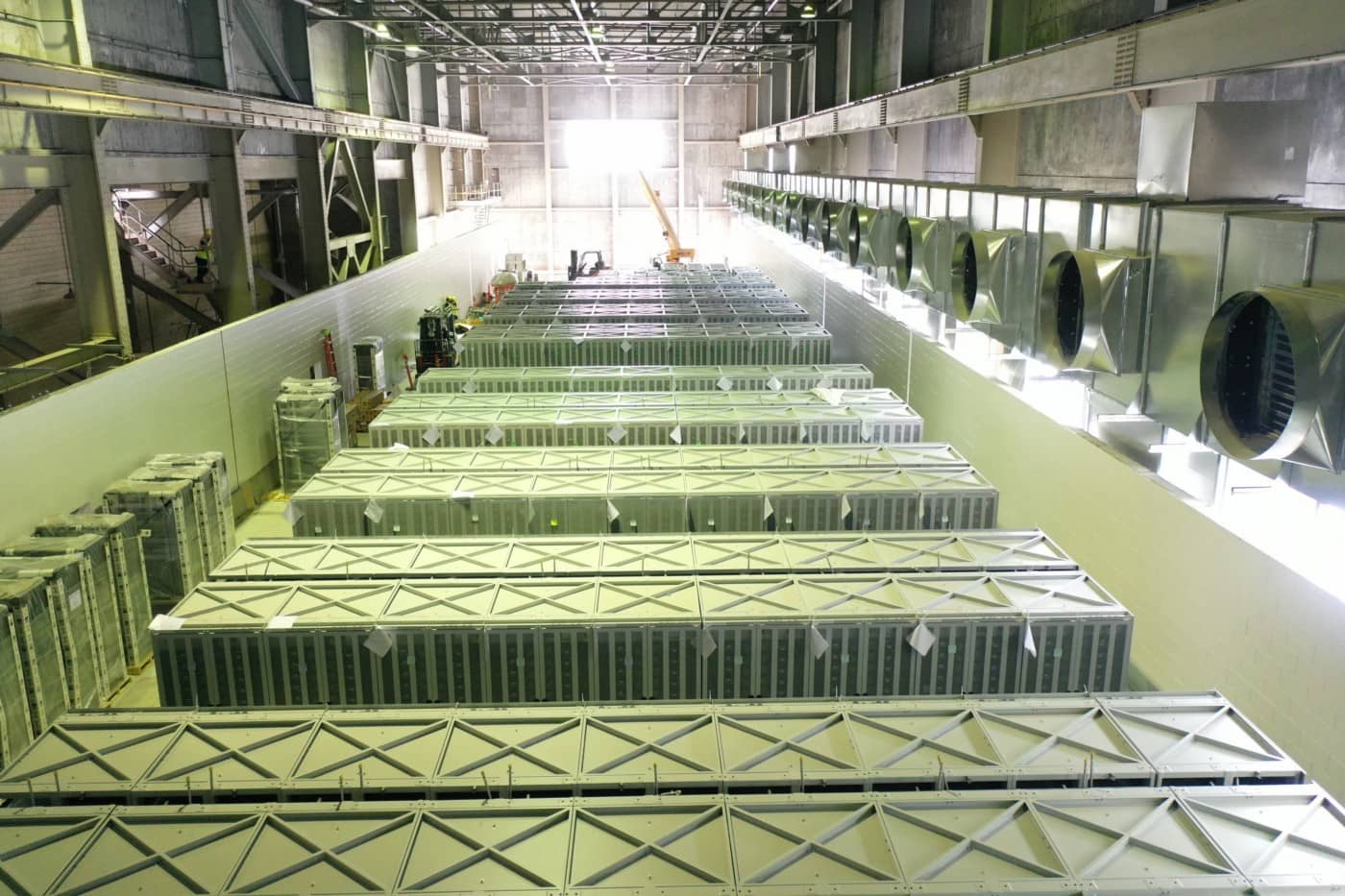The world’s largest battery energy storage site at Moss Landing in Monterey County, California suffered a significant overheating event recently, just a few weeks after the ribbon cutting for the facility¹. Now Vistra, the owner/operator, is faced with a major outage while investigating the event with the supplier LG Chem, the system integrator Fluence, and the local fire department.
“Overheating event” doesn’t quite capture the severity of the incident and how potentially catastrophic it could have been. According to the North Monterey County Fire Chief, this incident involved “scorched” battery racks,” “melted” wires, and “a lot of smoke.”² We know that the smoke/fire detection system was triggered, which activated a number of sprinkler systems. Thankfully, no major fire broke out or explosion occurred, and no one was hurt. This stands in stark contrast to the 2019 Arizona McMicken battery fire and explosion where multiple firefighters were injured. Does this mean that lessons learned from the McMicken fire prevented a worse outcome? Let’s look at the Moss Landing site more closely.
Originally built by PG&E in the 1950s with traditional gas turbine power generation, Moss Landing was once the largest power plant in California. In the past two years, Moss Landing became home to a battery energy storage system with 400MW/1,200MWh deployed. An additional nearby site with 182.5MW/735MWh of capacity provided by Tesla and owned and operated by PG&E is slated to come online later this year³. It’s worth noting that the California Energy Commission granted a permit in August 2020 to Vistra to expand the battery storage facility up to 1,500 MW/6,000 MHh, which would cement Moss Landing as a world showcase for long-duration gigawatt battery storage⁴. Given the high profile of the site, many eyes are turned on Moss Landing as it transitions from fossil fuels to battery-based clean energy storage.
The Moss Landing installation has two battery installations: a 300MW Phase 1 installation and a 100MW Phase 2 installation. The recent overheating event occurred at the larger Phase 1 installation, which resulted in a full shutdown while investigations are ongoing. In the meantime, the Phase 2 installation continues to run. Both systems feature LG Chem’s flagship TR1300 racks, with the Phase 1 installation containing 4,539 racks, and just under 100,000 batteries. Although details of the TR1300 racks are scarce, I estimate that the Phase 1 installation contains over one million individual cells (more on this later).
For those of us that operate within the energy storage market, it will be interesting to read the full details of the investigations, to the extent they become publicly available. But while we wait for the definitive word, it’s worth examining some known details.
As is well known, thermal runaway caused by lithium-ion batteries is a serious potential hazard for first responders, as was seen at the McMicken site⁵. Here, the root cause was reasonably determined to be an “internal cell defect” associated with “abnormal Lithium metal deposition and dendritic growth within the cell.”⁶ To put it simply, a short occurred in a single cell which caused cascading thermal runaway within the neighboring cells and batteries, and ultimately spread to batteries within the entire rack⁷. An additional risk is the resulting off-gassing from the heated cells can create an explosion when allowed to come in contact with oxygen and a spark. Given that the Phase 1 site at Moss Landing is housed indoors, the ventilation of smoke, fire and off-gassed chemicals is tricky and increases risks for first responders when incidents happen.
LG Chem, who is the largest producer of batteries in the world, is not having a great quarter with regards to battery incidents. I recently wrote about the unprecedented Chevy Bolt recall. In the Bolt’s case, recent reports indicate LG Chem manufacturing errors at the cell level are the suspected cause of the recall. It’s too early to conjecture on the Moss Landing incident, but I’m certain that a similar infrequent, cell-level manufacturing defect must be at the top or near the top of the list of potential causes for the investigators.
Given that this too may boil down to the failure of a single cell, threading battery data down to the serialized cell over its entire lifecycle will prove increasingly valuable when determining the root cause of battery incidents. This includes data traceability through the entire supply chain, build and lot details, electrolyte batch details, manufacturing equipment calibration details, formation metrology and BMS operating data, all threaded by the individual cell level over its entire lifecycle. An improved data value chain will provide a leap forward towards a better understanding of why these incidents occurred and how to prevent them in the future.
The DNV GL McMicken incident report points out that an inadequate fire suppression system was a contributing factor along with inadequate thermal barrier protections between the cells that could have otherwise slowed the spread of thermal runaway.
Recalling my estimate above of roughly one million cells for the Phase 1 site at Moss Landing, a possible culprit could be a manufacturing issue resulting in dendritic growth resulting in a short in a single cell, similar to the problem at the McMicken site. Thankfully, the Moss Landing overheating event did not have a similar catastrophic outcome, as the fire suppression system seems to have done the job. In particular, the use of sprinklers probably helped manage heat levels and prevent a cascading thermal runaway event.
This marks a significant improvement in the prevention of these kinds of incidents, and potentially an indication of lessons learned from the events at McMicken. I suspect that once we have the investigation details for the Moss Landing overheating event, there is a reasonable possibility that lessons learned from the Arizona fire had a positive impact in preventing a more catastrophic event. That is indeed a bright spot worth noting while the investigation continues.
[1]: https://pv-magazine-usa.com/2021/08/19/watch-moss-landing-marks-phase-ii-completion/
[2]: https://kion546.com/news/local-news/top-stories/2021/09/06/battery-modules-overheat-at-vistras-moss-landing-energy-storage-facility/
[3]: https://www.pge.com/en/about/newsroom/newsdetails/index.page?title=20200729_pge_tesla_break_ground_on_landmark_battery_energy_storage_system
[4]: The Tesla-supplied battery installation at the Hornsdale Power Reserve in Australia is rated at a much more modest 150MW / 193.5MWh, by comparison.
[5]: It’s worth reading the full incident report of the publicly-released, DNV GL authored “McMicken Battery Energy Storage System Event Technical Analysis and Recommendations” available at this link.
[6]: Page 1, “McMicken Battery Energy Storage System Event Technical Analysis and Recommendations”
[7]: Page 24, “McMicken Battery Energy Storage System Event Technical Analysis and Recommendations”

